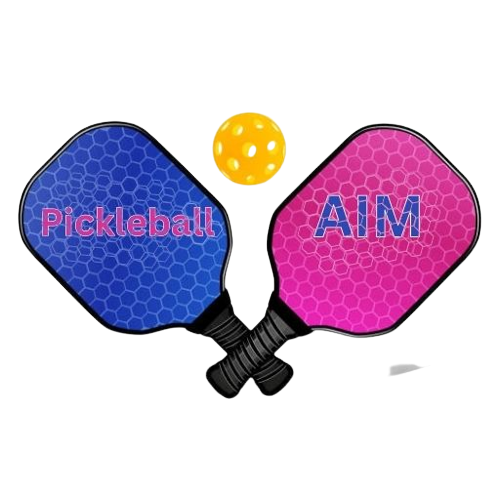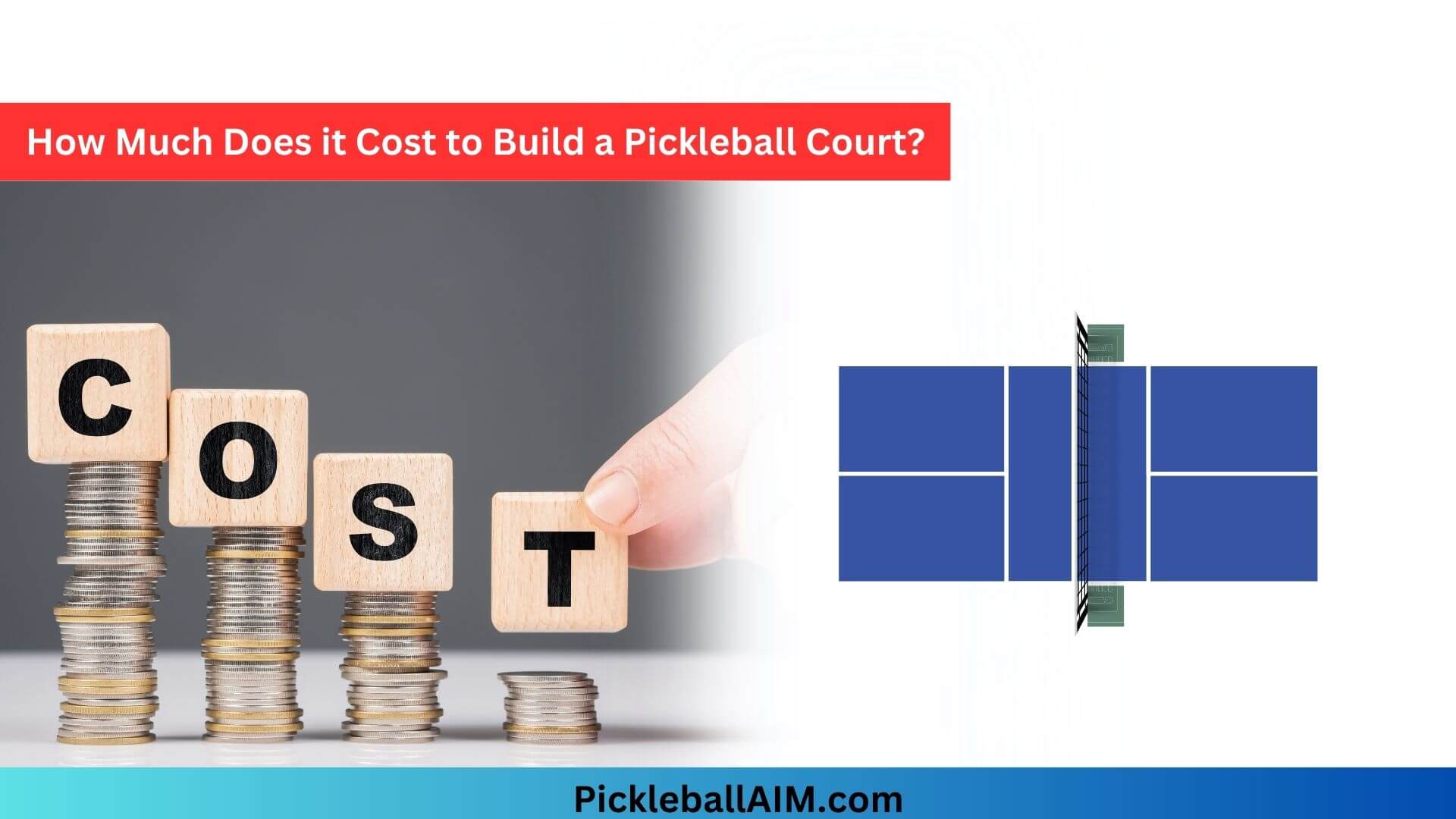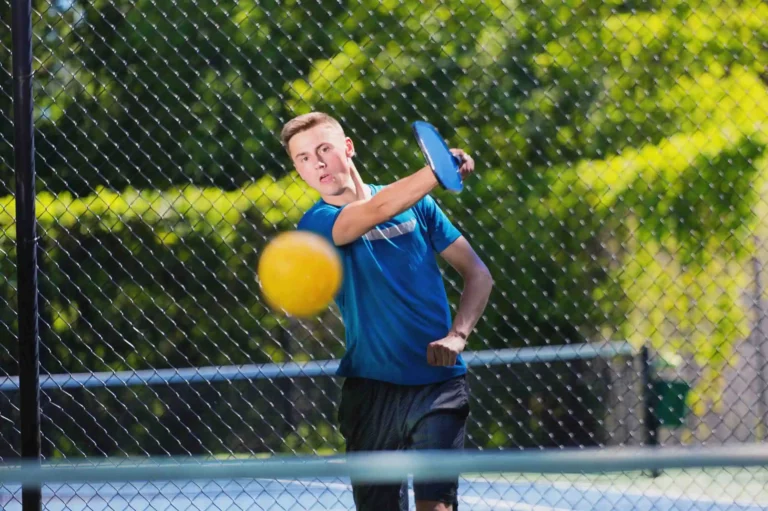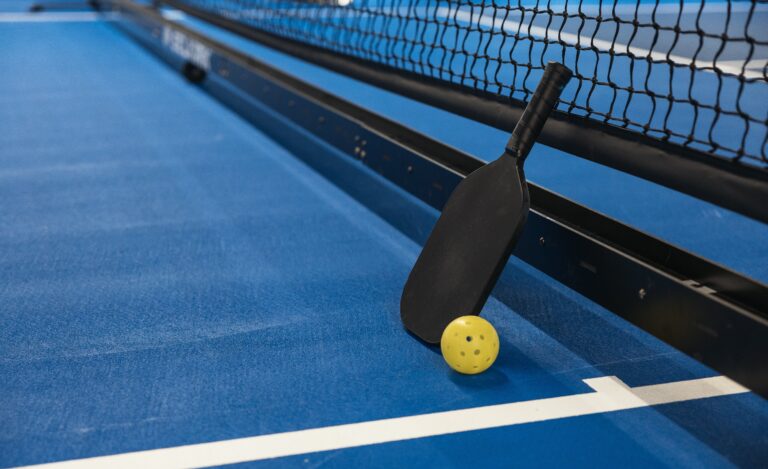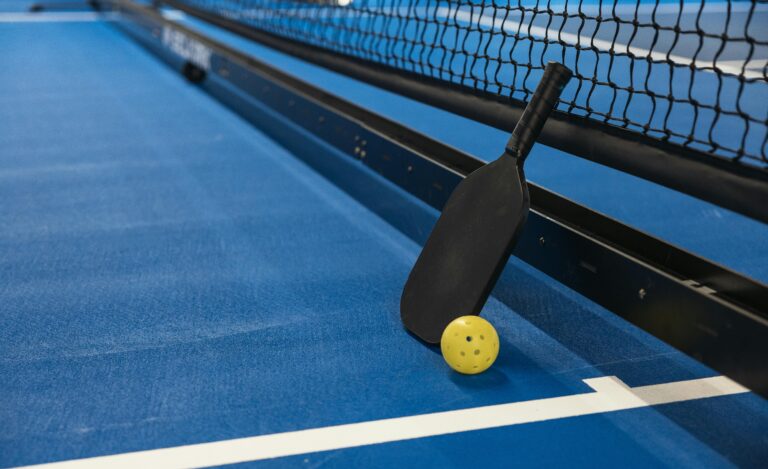Unveiling the Numbers: How Much Does it Cost to Build a Pickleball Court?
How Much Does it Cost to Build a Pickleball Court?
The cost of building a pickleball court can vary widely depending on factors such as location, court surface material, fencing, lighting, and amenities. On average, a basic outdoor pickleball court can cost between $10,000 to $30,000, while more elaborate facilities with multiple courts and premium features can exceed $100,000. Indoor courts tend to be more expensive due to the construction of an enclosed structure. It’s essential to get detailed quotes from contractors and consider your specific requirements to determine an accurate cost for your project.
Pickleball, a sport that combines elements of tennis, badminton, and table tennis, has been sweeping the nation. Enthusiasts are flocking to dedicated pickleball courts for fun and competition. If you’re considering building your own pickleball court, you’re probably wondering about the costs involved. While it’s a significant investment, the benefits of having your own court for personal enjoyment and community use can make it worthwhile. Let’s break down the numbers and explore how much it really costs to build a pickleball court.
Understanding the Costs
Building a pickleball court involves several key factors that influence the overall cost. These factors include court surface materials, site preparation, court dimensions, and additional amenities. Let’s dive into each of these aspects to get a clearer picture.
1. Court Surface Materials
The type of surface material you choose is a major cost determinant. There are three primary options:
- Asphalt: Asphalt is the most affordable option and costs approximately $4,000 to $8,000 for a single court. It’s durable but may require resurfacing every 4-8 years.
- Concrete: Concrete surfaces are long-lasting and relatively low-maintenance, but they come at a higher initial cost, ranging from $8,000 to $12,000 per court.
- Pickleball Court Kits: Some companies offer pickleball court kits that include everything you need, from surface materials to net posts. These kits can range from $10,000 to $20,000 or more per court.
2. Site Preparation
Site preparation involves clearing the area, grading, and ensuring proper drainage. Costs for site preparation vary depending on the condition of the land, but it typically ranges from $2,000 to $5,000 per court.
3. Court Dimensions
Official pickleball court dimensions measure 20 feet by 44 feet for singles play and 34 feet by 44 feet for doubles play. You can build one or multiple courts, which will affect the total cost. Keep in mind that building more courts can reduce the per-court cost.
4. Additional Amenities
Consider additional amenities like fencing, lighting, and seating. Fencing can range from $3,000 to $10,000 or more, lighting can cost $5,000 to $10,000 per court, and seating can range from a few hundred dollars to a couple of thousand dollars, depending on your preferences.
5. Maintenance Costs
Remember to account for ongoing maintenance costs, including resurfacing, net replacement, and general upkeep. These costs can add up over the years but are essential for preserving the court’s longevity and playability.
Total Costs
To calculate the total cost of building a pickleball court, you’ll need to factor in the costs of surface materials, site preparation, dimensions, additional amenities, and maintenance over time. On average, you can expect to spend between $10,000 and $30,000 or more for a single court, depending on your choices.
Funding Options and Considerations
Now that you have a better understanding of the costs involved in building a pickleball court, let’s explore some funding options and important considerations to help you make informed decisions.
Funding Options
- Personal Investment: If you’re building a pickleball court on your property for personal use, you’ll likely cover the costs yourself. In this case, it’s essential to establish a budget and carefully plan the project to stay within your financial means.
- Community Contributions: If you’re building a court for your community or a club, consider seeking contributions or donations from fellow enthusiasts, local businesses, or community organizations. Hosting fundraisers or crowdfunding campaigns can also help gather funds.
- Grants and Sponsorships: Explore the possibility of obtaining grants or sponsorships from local government bodies, sports organizations, or companies interested in promoting physical fitness and community engagement.
- Public-Private Partnerships: Collaborate with local governments or parks and recreation departments to create a public-private partnership for court construction. These partnerships often involve cost-sharing arrangements and shared maintenance responsibilities.
Important Considerations
- Location: Choose the location of your court wisely. Ensure it’s easily accessible to potential players and adheres to zoning regulations and local ordinances. Consider the proximity to parking and restroom facilities for convenience.
- Surface Quality: The quality of the playing surface is crucial for player enjoyment and safety. Invest in a surface that can withstand weather conditions and heavy use. Regular maintenance is essential to prolong the surface’s lifespan.
- Court Markings: Follow official pickleball court dimensions and markings. Proper court markings not only ensure fair play but also enhance safety.
- Lighting: If you plan to play in the evenings or during winter months with shorter daylight hours, investing in lighting is a must. Adequate lighting ensures safe and enjoyable gameplay.
- Community Involvement: Engage the local pickleball community and potential players in the planning and decision-making process. Their input can help create a court that caters to the needs and preferences of the players.
- Permits and Regulations: Be aware of any necessary permits, approvals, or regulations required for your court construction. Compliance with local laws and regulations is essential to avoid legal issues.
- Future Planning: Consider the long-term vision for your court. If you anticipate increased demand, plan for the possibility of expanding your facility in the future.
Maximizing the Value of Your Pickleball Court
Now that you’ve grasped the costs, funding options, and essential considerations for building a pickleball court, let’s delve into how to maximize the value and utility of your investment:
Community Engagement
A pickleball court can become a focal point for community engagement. Consider hosting open play sessions, clinics, or tournaments to encourage participation. Engaging with local schools, senior centers, and sports clubs can also promote inclusivity and make your court a hub for diverse age groups and skill levels.
Maintenance and Upkeep
Invest in regular maintenance to keep your pickleball court in top condition. Schedule periodic resurfacing, cleanings, and repairs as needed. Well-maintained courts not only extend the lifespan of your investment but also enhance the playing experience.
Community Events
Organize community events around your pickleball court to foster a sense of belonging. Picnics, potlucks, and social gatherings create a vibrant atmosphere and encourage players to form lasting connections. Consider dedicating specific days or times for family play to make the court family-friendly.
Youth Programs
Pickleball isn’t just for adults. Introduce the sport to local youth through after-school programs or summer camps. Encouraging young players not only helps grow the sport but also instills values like sportsmanship and teamwork.
Skill Development
Consider offering coaching or skill-building sessions. Experienced players or certified coaches can provide valuable guidance to players looking to improve their game. These sessions can foster a strong sense of community and encourage players to return to the court regularly.
Online Presence
Create an online presence for your pickleball court. A website or social media page can help disseminate information about court availability, events, and updates. It also serves as a platform for community members to connect and share their experiences.
Sustainability
Implement sustainable practices around your court. Consider installing eco-friendly lighting options, using environmentally responsible court surfacing materials, and promoting recycling and waste reduction among players.
Feedback and Adaptation
Regularly seek feedback from players and the community to assess their needs and preferences. Be open to making necessary adjustments or additions based on this feedback. An adaptable approach ensures your pickleball court remains relevant and valuable.
Promote Safety
Safety should be a top priority. Ensure that the court area is well-lit, and install safety features such as first-aid kits and emergency contact information. Promote responsible play to prevent accidents and injuries.
The Gift of Pickleball
Building a pickleball court is an investment not only in recreation but also in the well-being and sense of community of those who use it. It can be a gift that keeps on giving, providing countless hours of enjoyment, social interaction, and physical fitness for years to come. With careful planning, engagement, and maintenance, your pickleball court can become a cherished asset, uniting people and promoting a love for the sport. So, as you embark on this journey, remember that the true value of your pickleball court extends far beyond the dollars and cents invested—it’s about enriching lives and creating lasting memories.
Conclusion
Building a pickleball court can be a rewarding endeavor, offering not only a place to enjoy the sport but also an opportunity to promote fitness and community engagement. Understanding the costs involved, exploring funding options, and carefully considering important factors such as location, surface quality, and community involvement are essential steps in the planning process.
Remember that while the initial investment may seem significant, the long-term benefits of a pickleball court in terms of physical fitness, social interaction, and community development can make it a valuable addition to your property or community. So, with careful planning and a clear vision, you can create a pickleball court that serves as a hub of activity, enjoyment, and healthy competition for years to come.
